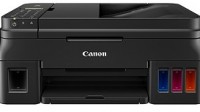-->
(Driver Verifier is not included with Windows 10 S.) Driver Verifier is not distributed separately as a download package. For information about changes in Driver Verifier for Windows 10 and previous versions of Windows, see Driver Verifier: What's New. When to use Driver Verifier. Run Driver Verifier throughout development and testing of your. Download the latest drivers, software, firmware, and diagnostics for your HP printers from the official HP Support website.
Driver Verifier monitors Windows kernel-mode drivers and graphics drivers to detect illegal function calls or actions that might corrupt the system. Driver Verifier can subject Windows drivers to a variety of stresses and tests to find improper behavior. You can configure which tests to run, which allows you to put a driver through heavy stress loads or through more streamlined testing. You can also run Driver Verifier on multiple drivers simultaneously, or on one driver at a time.
Caution
- Running Driver Verifier could cause the computer to crash.
- You should only run Driver Verifier on computers that you are using for testing and debugging.
- You must be in the Administrators group on the computer to use Driver Verifier.
- Driver Verifier is not included in Windows 10 S, so we recommend testing driver behavior on Windows 10 instead.
Where can I download Driver Verifier?
You don't need to download Driver Verifier, because it is included with most versions of Windows in %WinDir%system32 as Verifier.exe. (Driver Verifier is not included with Windows 10 S.) Driver Verifier is not distributed separately as a download package.
For information about changes in Driver Verifier for Windows 10 and previous versions of Windows, see Driver Verifier: What's New.
When to use Driver Verifier
Run Driver Verifier throughout development and testing of your driver. More specifically, use Driver Verifier for the following purposes:
To find problems early in the development cycle, when they are easier and less costly to correct.
For troubleshooting and debugging test failures and computer crashes.
To monitor behavior when you deploy a driver for testing using the WDK, Visual Studio, and the tests from the Windows Hardware Lab Kit (Windows HLK) or Windows Hardware Certification Kit (for Windows 8.1). For more information about testing drivers, see Testing a Driver.
How to start Driver Verifier
You should only run Driver Verifier on test computers, or on computers that you are testing and debugging. To get the most benefit from Driver Verifier, you should use a kernel debugger and connect to the test computer. For more information about debugging tools, see Debugging Tools for Windows (WinDbg, KD, CDB, NTSD).
Start a Command Prompt window by selecting Run as administrator, and type verifier to open Driver Verifier Manager.
Select Create standard settings (the default task), and select Next.
You can also choose Create custom settings to select from predefined settings, or to select individual options. For more information, see Driver Verifier options and rule classes and Selecting Driver Verifier Options.
Under Select what drivers to verify, choose one of the selection schemes described in the following table.
Option Recommended use Automatically select unsigned drivers Useful for testing on computers that are running versions of Windows that do not require signed drivers.
Automatically select drivers built for older versions of Windows Useful for testing driver compatibility with newer versions of Windows.
Automatically select all drivers installed on this computer Provides maximum coverage in terms of the number of drivers that are tested on a system. This option is useful for test scenarios where a driver can interact with other devices or drivers on a system.
This option can also exhaust the resources available for Special Pool and some resource tracking. Testing all drivers can also adversely affect system performance.
Select driver names from a list In most cases, you will want to specify which drivers to test.
Selecting all drivers in a device stack allows the Enhanced I/O Verification option to track objects and check compliance because an I/O request packet (IRP) is passed between each of the drivers in the stack, which allows for a greater level of detail to be provided when an error is detected.
Select a single driver if you are running a test scenario that measures system or driver performance metrics, or if you want to allocate the greatest number of resources available for detecting memory corruption or resource tracking issues (such as deadlocks or mutexes). The Special Pool and I/O Verification options are more effective when used on one driver at a time.
If you chose Select driver names from a list, select Next, and then select one or more specific drivers.
Select Finish, and then restart the computer.
Note
You can also run Driver Verifier in a Command Prompt window without starting Driver Verifier Manager. For example, to run Driver Verifier with the standard settings on a driver called myDriver.sys, you would use the following command:
For more information about command line options, see Driver Verifier Command Syntax.
How to control Driver Verifier
You can use either Driver Verifier Manager or a command line to control Driver Verifier. To start Driver Verifier Manager, see How to start Driver Verifier, earlier in this topic.
For each of the following actions, you can use Driver Verifier Manager or enter a command line.
To stop or reset Driver Verifier
In Driver Verifier Manager, select Delete existing settings, and then select Finish.
or
Enter the following command at a command prompt:
Restart the computer.
To view Driver Verifier statistics

In Driver Verifier Manager, select Display information about the currently verified drivers, and then select Next. Continuing to select Next displays additional information.
or
Enter the following command at a command prompt:
To view Driver Verifier settings
In Driver Verifier Manager, select Display existing settings, and then select Next.
or
Enter the following command at a command prompt:
How to debug Driver Verifier violations
To get the most benefit from Driver Verifier, you should use a kernel debugger and connect it to the test computer. For an overview of debugging tools for Windows, see Debugging Tools for Windows (WinDbg, KD, CDB, NTSD).
If Driver Verifier detects a violation, it generates a bug check to stop the computer. This is to provide you with the most information possible for debugging the issue. When you have a kernel debugger connected to a test computer that is running Driver Verifier, and Driver Verifier detects a violation, Windows breaks into the debugger and displays a brief description of the error.
All violations detected by Driver Verifier result in bug checks. Common bug check codes include the following:
For more information, see Handling a Bug Check When Driver Verifier is Enabled. For tips about debugging Bug Check 0xC4, see Debugging Bug Check 0xC4: DRIVER_VERIFIER_DETECTED_VIOLATION.

When you start a new debugging session, use the debugger extension command, !analyze. In kernel mode, the !analyze command displays information about the most recent bug check. To display additional information, to help identify the faulting driver, add option -v to the command at the kd> prompt:

In addition to !analyze, you can enter the following debugger extensions at the kd> prompt to view information that is specific to Driver Verifier:
!verifier dumps captured Driver Verifier statistics. Use !verifier -? to display all of the available options.
!deadlock displays information related to locks or objects tracked by Driver Verifier's deadlock detection feature. Use !deadlock -? to display all of the available options.
!iovirp [address] displays information related to an IRP tracked by I/O Verifier. For example:
!ruleinfo [RuleID] displays information related to the DDI compliance checking rule that was violated. (RuleID is always the first argument to the bug check.) All rule IDs from DDI compliance checking are in the form 0x200nn. For example:
Related topics
-->The WDK is used to develop, test, and deploy Windows drivers.
Join the Windows Insider Program to get WDK Insider Preview builds. For installation instructions for the Windows Insider Preview builds, see Installing preview versions of the Windows Driver Kit (WDK).
Runtime requirements
You can run the Windows 10, version 2004 WDK on Windows 7 and later, and use it to develop drivers for these operating systems:
| Client OS | Server OS |
|---|---|
| Windows 10 | Windows Server 2019, Windows Server 2016 |
| Windows 8.1 | Windows Server 2012 R2 |
| Windows 8 | Windows Server 2012 |
| Windows 7 | Windows Server 2008 R2 SP1 |
WDK for Windows 10, version 2004
Step 1: Install Visual Studio 2019
The WDK requires Visual Studio. For more information about system requirements for Visual Studio, see Visual Studio 2019 System Requirements.
The following editions of Visual Studio 2019 support driver development for this release:

When you install Visual Studio 2019, select the Desktop development with C++ workload. The Windows 10 Software Development Kit (SDK) is automatically included, and is displayed in the right-hand Summary pane. Note that the version of the SDK that is compatible with the WDK for Windows 10, version 2004 may not be the default SDK. To select the correct SDK:
In Visual Studio Installer, on the Individual components tab, search for Windows 10 SDK (10.0.19041.0), select this version and continue with install. Note that Visual Studio will automatically install Windows 10 SDK (10.0.19041.1) on your machine.
If you already have Visual Studio 2019 installed, you can install the Windows 10 SDK (10.0.19041.1) by using the Modify button in Visual Studio install.
WDK has Spectre mitigation enabled by default but requires spectre mitigated libraries to be installed with Visual Studio for each architecture you are developing for. Additionally, developing drivers for ARM/ARM64 require the build tools for these architectures to also be installed with Visual Studio. To locate these items you will need to know the latest version of MSVC installed on your system.
To find the latest version of MSVC installed on your system, in Visual Studio Installer go to workload page, on the right pane under installation details, expand Desktop development with C++ and locate the MSVC v142 - VS 2019 C++ x64/x86 build tools (V14.xx) - note where xx should be the highest version available.
With this information (v14.xx), go to Individual components and search for v14.xx. This will return the tool sets for all architectures, including Spectre mitigated libs. Select the driver architecture you are developing for.
For example, searching for v14.25 returns the following:
Step 1.5 Install Refreshed Windows SDK 10.0.19041.16385 for Windows 10, version 2004
This SDK is strongly recommended and will eventually be made available thru Visual Studio
Step 2: Install Refreshed WDK for Windows 10, version 2004
The WDK Visual Studio extension is included in the default WDK installation.
Tip
If you can't find driver project templates in Visual Studio, the WDK Visual Studio extension didn't install properly. To resolve this, run the WDK.vsix file from this location: C:Program Files (x86)Windows Kits10VsixVS2019WDK.vsix.
Enterprise WDK (EWDK) for Windows 10, version 2004
The EWDK is a standalone, self-contained command-line environment for building drivers. It includes the Visual Studio Build Tools, the SDK, and the WDK. The latest public version of the EWDK contains Visual Studio 2019 Build Tools 16.7.0 and MSVC toolset v14.23. To get started, mount the ISO and run LaunchBuildEnv.
The EWDK also requires the .NET Framework version 4.7.2. For more information about other requirements for the .NET Framework, see .NET Framework system requirements.
EWDK with Visual Studio Build Tools
You can use the Visual Studio interface with the build tools provided in the EWDK.
Hp3600dn Driver Windows 10
- Mount the EWDK ISO.
- Run
LaunchBuildEnv.cmd. - In the environment created in step 2, type SetupVSEnv, and then press Enter.
- Launch devenv.exe from the same environment, using the full file path.Example:
'C:Program Files (x86)Microsoft Visual Studio2019%Community|Professional|Enterprise%Common7IDEdevenv.exe'
Note that the Visual Studio major version should match with the version in the EWDK. For example, Visual Studio 2019 works with the EWDK that contain VS16.X build tools.
Driver samples for Windows 10
To download the driver samples, do one of the following:
Ptytrade Driver Download For Windows 10 7
- Go to the driver samples page on GitHub, click Clone or download, and then click Download ZIP.
- Download the GitHub Extension for Visual Studio, and then connect to the GitHub repositories.
- Browse the driver samples on the Microsoft Samples portal.